|
Although nearly seventy years of age, Mr Napier was
still very active. This is amply proved by the fact that he then
struck out into a new line whereby he increased his fame, making the
building of battleships a special feature of his business.
The Emperor Napoleon III. had given orders for the
construction of an ironclad frigate called the Gloire. This new
departure, coupled with an unusual activity in the French dockyards,
caused disquiet in the mind of the British Government.
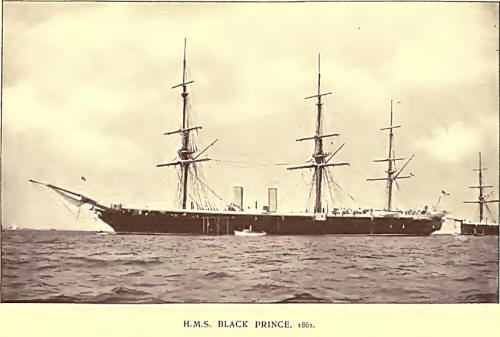
To meet the emergency the Admiralty determined to lay
down large sea-going vessels, cased with armour plates; and in the
early part of 1859 they addressed to Messrs Napier a confidential
letter, requesting a design and suggestions for a shot-proof frigate
of 36 guns, cased with 4J-inch armour plates from the upper deck to
five feet below the load waterline, to steam 13J knots, and to be
capable of carrying weights amounting to 1200 tons, in addition to
coals for at least seven days full steaming.
Mr Napier personally went very carefully into the
details of the design, and in the end of February submitted three
models and plans for the proposed ship. Two months later he received
the following letter :—
Admiralty, 3Oth April 1859.
Sir,—I am commanded by my Lords Commissioners of the
Admiralty to thank you for your ready and cheerful compliance with
their wishes, and for the very creditable design furnished by you
for an iron-cased frigate; and am now to request you will state the
price per ton and the shortest time you will require for building a
vessel of this description, the drawings and specification for which
will be ready for inspection at the office of the Surveyor of the
Navy on Monday next. The tenders are to be sent under seal to the
Surveyor of the Navy, marked “Tender for Iron Vessel,” so as to be
received by noon on Saturday the 7th May.—I am, Sir, your obedient
servant, H. Corry.
R. Napier, Esq.
It will be observed that less than a week was given
within which to inspect the drawings and specification and send in a
tender; but yet Mr Napier on 6th May offered to build and engine the
ship within a year for the sum of £283,000 sterling. In his letter
of offer, reference was made to the novelty of the work, and the
difficulty of forming a fair estimate of the cost and time
necessary. There was also a proposal to build the vessel in less
than the time named, if required, leaving the remuneration for
“forced labour” to be determined by the Admiralty.
Mr Napier was not successful in obtaining the
contract for the first frigate, the Warrior, which was given to the
Thames Company, but a few months afterwards, on the 23rd September,
he received intimation that the Commissioners had decided on
building a second vessel, and asking an offer for the hull. A tender
was submitted on the 3rd October, offering to build the ship at £37,
5s. per ton; and three days later this offer was accepted. At first
it was intended to call the ship the Invincible, and on 14th January
1860 my Lords sent notification to this effect. Next day, however,
they issued new instructions, altering the name to the Black Prince.
The building of an ironclad was a task fraught with
much difficulty, as the work was entirely novel. To construct the
vessel, more ground at Govan had to be acquired, and a promise
obtained from the Clyde Trustees that they would deepen the river to
the depth necessary for the launch and safe seaward passage of the
frigate.
The Black Prince measured nearly 420 feet over all,
and her displacement was 9800 tons. She was thus much longer and
heavier than any work which had hitherto been undertaken in Govan
Yard.
The difficulties that arose during construction were
great. Material capable of standing the new tests, which were
rigorously applied, could only be got after long delay and at
enormously increased cost.
The trouble experienced with the massive stern frame,
with the armour plates, with plans, &c., so retarded the work, that
instead of being finished in twelve months as anticipated, the
vessel was over two years in the Clyde under construction.
All obstacles, however, were finally overcome, and
the Black Prince, christened by Miss Napier of Saughfield, entered
the water on 27th February 1861. Her launch was considered such a
great event in Glasgow that it was made the occasion of a public
holiday; and even Professor Lush-ington adjourned his Greek class
with the remark that “this was a sight the Athenians would have
loved to see.” The vessel was taken to Greenock about a fortnight
later to be finished, and she remained there till nearly the end of
the year.
As might have been expected in view of the
circumstances of the case, the contracts for the Warrior and Black
Prince proved most unremunerative to the builders; but while the
Admiralty willingly compensated the English contractor, they
declined to reimburse the Scottish one. This injustice, however, was
not allowed to pass; and eventually, after long delay, Napier got
his claims recognised and his loss in great measure made good.
Many years before this time Mr Napier had acquired
the Parkhead Forge, and the management of it was undertaken by his
son-in-law, Mr Rigby. When ironclads. were being contemplated, Mr
Rigby induced his friend Mr Beardmore, who was then an engineer in
London, to join him, and they took over the Forge, which was carried
on under the style of Messrs Rigby & Beardmore. They put down heavy
rolling-mills, with the intention of making armour plates; but not
succeeding in this the mills were adapted for the production of ship
and boiler plates, in which the firm did a large and profitable
business. Rigby died in 1863, and his widow, advised by the Napiers,
whom he had appointed as his trustees, carried on the business in
conjunction with Mr Beardmore till 1872. Mr William Beardmore, who
succeeded his father, managed to carry out successfully the original
intention of armour-plate making; and eventually, in 1900, with a
view to turning out a ship of war complete, with armour, guns,
engines, &c., he purchased from the Napiers the parent business of
R. Napier & Sons.'
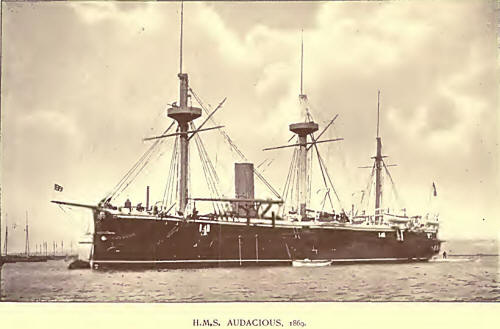
After the successful completion of the Black
Prince the Danish Government commissioned Messrs Napier to build a
war-vessel. In this instance the Danes had such confidence in Mr
Napier’s integrity and uprightness that they made him sole arbiter
in the contract which they entered into with Messrs R.
Napier & Sons.
The Rolf Krake was a handy ship of a new design,
armed with four heavy guns, placed in turrets or shields, as
patented by Captain Cowper Coles. In the war between Denmark and
Prussia in 1866 she gave a good account of herself, being fired at
150 times and coming off unscathed.
She turned the tables completely against the
Prussians; and competent authorities have asserted that if the Danes
had possessed more Rolf Krakes the result of the war would have been
different.
The Turkish Government was the next foreign Power to
requisition his services, and entrusted him with an order for three
large frigates—the Osman Ghazy, the Abdul Aziz, and the Orkhan.
David Livingstone, the celebrated African traveller,
was one of Napier’s acquaintances ; and being in this country in
1865, he was asked to the trial trip of the Osman Ghazy, which was a
great event. Livingstone’s reply to this invitation will be read
with interest, containing, as it does, a glimpse of his private
life.
Burnbank Road, Hamilton,
24th June 1865.
My dear Mr Napier,—I thank you very much for kindly
remembering me in the launch and trial trip.
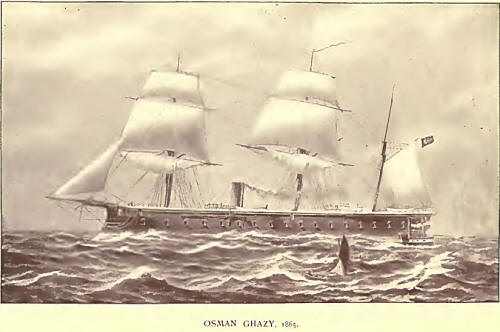
I shall be unable to avail myself of the pleasure of
seeing the launch; but I should like so very much to see an ironclad
performing under your superintendence, that if possible I shall be
present at the trial trip of Osman Ghazy on Wednesday.
In giving the usual intimation to my friends, I quite
forgot to send one to you and Mrs Napier about the death of my
mother, aged eighty-two.
She said to me, when going away seven years ago, that
she would like to have one of her “laddies” to lay her head in the
grave. That wish was granted, for I performed the last duty to her
yesterday.
Tell Mrs Napier that the great change appeared only
an hour before the close in quicker breathing. My sister said, “I
think the Saviour has come for you, mother; you can lippen yourself
to Him.” “Oh yes,” she said in a way that only we Scotch can
understand, gave a last look to our little girl, and said, “bonnie
wee lassie,” closed her eyes, and soon all was over.
We are thankful to believe she is safe in the haven
of mercy. These little things we mention only to friends who can
appreciate them.—Ever yours, David Livingstone.
After finishing the warships for the Sultan, Napier
was commissioned by the Netherlands Government to build for them two
coast defence vessels, the De Buffet and De Tijger.
Further contracts for large warships for the British
Navy followed, and the stream of orders from this source flowed
henceforth uninterruptedly.
While engaged on this heavy class of work, Messrs
Napier found time to construct a river steamer, the Neptune, with
which they emulated the success attained in early days by
theClarence.
The Neptime was a very fast boat, and had many
features that were then novelties, such as double diagonal engines
running at high speed, Gifford’s patent injectors, superheaters in
the funnel uptakes, very small paddle-wheels, iron floats, &c., &c.
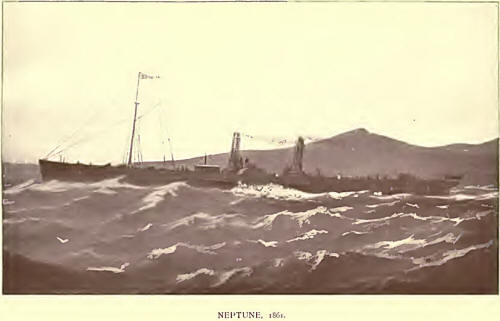
Mr Dunsmuir, now of Messrs Dunsmuir & Jackson, was
placed in charge of the engine-room, and in his hands she was the
swiftest vessel on the river, attaining a speed of 21 miles an hour,
with engines making seventy-three revolutions per minute. After
running two seasons on the Clyde she was sold to run the American
blockade between Havanna and Mobile, Dunsmuir agreeing to go with
her.
On her way out she was nearly wrecked off the coast
of Portugal, having been navigated too near the shore among
breakers. She was given up as lost, and no doubt would have been but
for her great engine power, by which she was literally dragged
through the surf, which was breaking over her, and thus made a very
narrow escape. When coaling at St Thomas she was watched by
the Washita, one of the fastest cruisers in the American Navy,
commanded by the daring Admiral Wilkes, of Mason and Sliddell fame.
No sooner had the Neptune cleared the harbour than it was seen that
the cruiser was pursuing her. The chase was maintained ail day, but
before daylight disappeared the Washita was left hull down on the
horizon. All night the Neptune was kept going at her top speed, and
by next morning there was no appearance of her pursuer.
There were several very hot runs about Cuba, but she
managed successfully to pass four times through Admiral Farragut’s
blockading squadron. On one of these ventures she was nearly
captured, having gone on a sand-bank during the night at the
critical juncture of passing through the fleet. She remained aground
for about three hours. During all this time the engines were kept
going at full speed, and at daybreak she had the good fortune to
pull off. Had the vessel not been exceptionally strong, it is
evident she could not have stood the very rough treatment she
continually received.
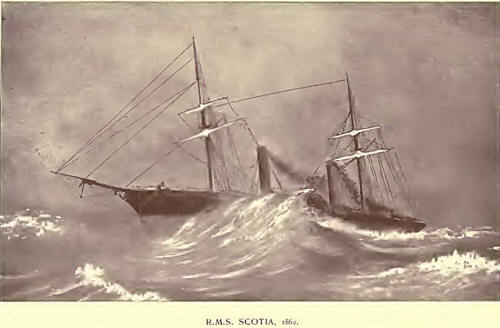
The profits on blockade-running were enormous,
amounting in this case to £15,000 a trip; and Dunsmuir, on whom so
much depended, was only receiving £100 for the double run.
After the fourth successful run, he very reasonably
requested that his remuneration should be doubled; but the owners
refusing this, he resigned with regret, and on the next attempt
the Neptune was captured.
She was taken as a prize to Norfolk, in Chesapeake
Bay, and used by the Northern States for watching other block-ade-runners.
In 1861-62 two vessels were built for the Cunard
Company,—the paddle-steamer Scotia, and a screw-steamer called
the China. The days of the Atlantic paddle-steamer were numbered;
and it may be mentioned that in the letter inviting the tender for
the Scotia there is reference to the possibility
of her ultimate transformation into a screw, and
provision was to be made for doing so. This change actually took
place some years later, when she was purchased by the Telegraph
Construction and Maintenance Company, and converted into a twin
screw. These two vessels were the last ordered by the Cunard Company
from Mr Napier.
In 1864 he undertook to build two large fast screw
steamers for the Compagnie Gendrale Transatlantique—viz., the Pereire and
the Ville de Paris. With these the blue ribbon of the Atlantic was
wrested from their British competitors.
Mr Napier had previous experience of the generosity
of the French, since he had attended the great Exhibition of 1855 in
an official capacity, and had then been created a Chevalier of the
Legion of Honour. Now he was extolled and feted by them; and when
present at the Exhibition of 1867 the Empress Eugenie was so struck
with his dignified appearance that she requested that he should be
specially presented to her.

Another connection he formed was with Sir Donald
Currie, who entrusted the construction first of his sailing-ships
and afterwards the greater part of his fleet of Cape mail - steamers
to Mr Napier’s firm.
Special reference may also be made to the contract he
received from his old customers, the Indian Government, for the
troopship Malabar. This magnificent specimen of naval architecture,
designed by Sir E. J. Reed, was sister ship to the Serapis, which
was chosen as the vessel most suitable for his Majesty the King
when, as Prince of Wales, he visited India.
In 1870 Messrs Devitt & Moore ordered a large steamer
called the Queen of the Thames. It was the intention of her owners
to run steamers to Australia capable of making the passage in forty
days; and this was the pioneer vessel. Messrs Devitt & Moore
contemplated building six vessels of her type to maintain the
service, but most unfortunately the steamer on her first homeward
passage was wrecked at Cape Agulhas, and in consequence the
enterprise was abandoned.
Ten years later the scheme was again revived by
Messrs George Thompson & Co., and brought to a successful
issue,—Messrs Napiers’ firm, of which Dr Kirk was then the head,
constructing the Aberdeen, the first vessel fitted with triple -
expansion engines.
The Dutch Transatlantic Company in 1871 favoured Mr
Napier with a large order; and his former friends the Pacific
Company returned to him. Contracts such as these, along with
numerous important Government orders, kept his Works well employed.
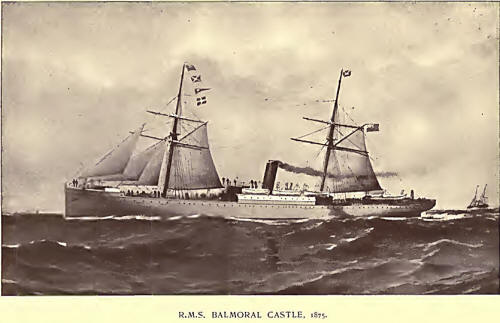
Competition gradually grew keener; but Mr Napier
always insisted that the quality of work turned out by his firm must
be of the very best. When it was suggested to him that the
exigencies of the times required cheaper methods, he would hear of
none of them, saying he would, if need be, retire from business, but
that his name must never be associated with work that could be
considered in any way inferior.
As years pressed on him the active management
devolved more and more on his son, Mr John Napier, but the
conditions with which he was confronted made it impossible to carry
on the Works profitably. Mr John Napier never shrank from his
difficult task; but though an able engineer, his attention was so
taken up with the general management of affairs that few
opportunities were afforded him of indulging his mechanical bent. It
was, however, at his instance that “the measured mile” at Skelmorlie,
which is still considered the best of its kind in the kingdom, was
laid out and measured, and letters were addressed to all the
shipbuilders in the following terms :—
“Lancefield House, Glasgow, 30^ August 1866.
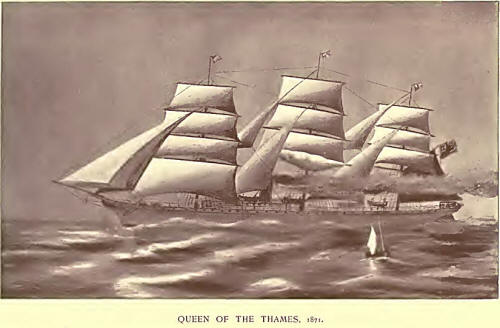
“Dear Sirs,—We beg respectfully to state that having
long felt the want on the Clyde of a correct measured nautical mile
for testing the speed of large steamers (similar to what the
Admiralty have near Portsmouth and elsewhere), we had the shores of
the Clyde examined for a suitable place for laying off a knot; and
finding that from Skelmorlie Pier southwards would answer the
purpose, we applied to the Right Hon. the Earl of Eglinton for
liberty to erect beacons on his property. This the Earl at once most
kindly gave full permission to do. We then employed Messrs Kyle & Frew,
along with Messrs Smith & Wharrie, Land Surveyors, Glasgow, to
measure and lay off a knot, which they did; and thereafter we made
application to the Lords Commissioners of the Admiralty, begging as
a favour that .they would send one of their officers to remeasure
and test the correctness of this knot, and we would willingly bear
the expense. Their Lordships were pleased to accede to our request,
and afterwards intimated to us that the knot had been duly tested by
their officers and found correct. At the same time they declined to
make any charge.
“Their Lordships have caused a printed notice to
mariners to be issued from the Hydrographic Department of the
Admiralty, of which the annexed is a copy.—We are, dear Sirs, your
obedient servants,
“R. Napier & Sons.”
NOTICE TO MARINERS.
No. 36.
Scotland—West Coast.
Measured Mile in Firth of Clyde.
Notice is hereby given that beacons to indicate the
length of a nautical mile (6080 feet), for testing the speed of
steam-vessels, have been erccted on the eastern shore of the Firth
of Clyde.
Each beacon consists of a single pole 45 feet high
with two arms 10 feet long forming a broad angle 15 feet from the
base, the whole being painted white.
The two northern beacons are erected near Skelmorlie
Pier, the outer one being close to the high-water shore on the south
side, and from it the inner one (in a recess of a cliff) is 83 yards
distant, bearing S.E. by E. f E.
The two southern beacons stand on level ground near
Skelmorlie Castle, the inner one being 100 yards from the outer one,
in a S.E by E. f E. direction.
The courses parallel with the measured mile at right
angles to the line of transit of the beacons are N.N.E. { E. and
S.S.W. { W. The shore may be approached to the distance of a third
of a mile.
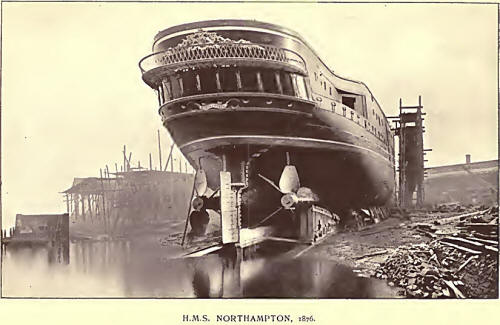
Geo. Henry Richards, Hydrographer.
Hydrographic Office, Admiralty,
London, 4th July 1866.
One of Mr Napier’s last public appearances was at a
large social gathering of his workmen, held in the City Hall in
1868, over which he presided. At this reunion he related to his
employees for their encouragement the story of his early struggles,
and displayed as a token of his former skill the hammer-head,
already referred to, which he had made more than fifty years
previously.
Although he now rarely visited his Works, he was as
active as ever in the social sphere, and continued to dispense
open-handed hospitality at his house at West Shandon. He was in the
habit of
getting letters such as the following one, and these
always called forth a cordial response :—
195 West George Street, Thursday, ls< October 1874.
My dear Sir,—I have been encouraged by my mother, who
has the pleasure of knowing you, to claim your acquaintance as a
member of the name; and I propose to do myself the honour of paying
you a visit at Shandon on the afternoon of Saturday next, if it is
convenient to you to receive me.
I am staying with Mr and Mrs C. Tennant during the
meeting of the Social Science Congress, and Mrs Tennant will avail
herself of the same occasion to pay her respects to Mrs
Napier.—Believe me, my dear Sir, yours very faithfully, Napier
and Ettrick.
Almost every person of note who came to the West of
Scotland called upon him; and special mention may be made of the
visit which the Princess Louise paid to West Shandon shortly after
her marriage with the Marquis of Lorne. Her Royal
Highness was so delighted with her host that she sent
him her photograph us a souvenir.
In his closing years honours flowed in upon him from
all quarters.
Reference has already been made to his connection
with the French Exhibitions; and in a similar capacity he acted as
Chairman of the Jury on Naval Architecture at the London Exhibition
of 1862.
The Institution of Mechanical Engineers, of which he
was a prominent member, elected him as their president in 1864, a
distinction he enjoyed in common with his friends Fairbairn, Penn,
and Whitworth.
He was also one of three honorary members elected by
the Glasgow Society of Engineers in 1869, the other two being
Fairbairn and Sir William Thomson, now better known as Lord Kelvin.
In the same year the King of Denmark, desirous of
recognising his services to naval architecture, conferred on him the
honour of Knight Commander of the Danne-brog. A prominent naval
officer, congratulating him on the occasion, wrote :—
I have rejoiced that the King of Denmark has shown a
proper spirit in conferring on you the honour of one of Denmark’s
Orders, and may our Queen be induced to show her appreciation of
your valuable services to our Navy by conferring a similar honour in
the shape of a K.C.B. Why not? for, as Jack says, ‘You builds ’em;
we sails ’em.’ Long may you be spared to enjoy what you have already
gained.
This omission was commented on at the time of
Napier’s death, one of the papers boldly saying : “Her Majesty alone
seems to have been negligent in recognising his genius by any
distinguishing mark of royal favour, an omission which does little
credit to the successive Governments which profited by his skill,
and should have advised her Majesty of the opportunity afforded to
her.”

This apparent overlook might to a certain extent be
accounted for by the fact that Mr Napier was not a politician, and
he never was in any sense of the word a place-seeker.
Titles, however, are evanescent, being of more
importance in the eyes of contemporaries than in those of their
descendants; and posterity will know Robert Napier by a greater
designation as the father of modern shipbuilding. |

